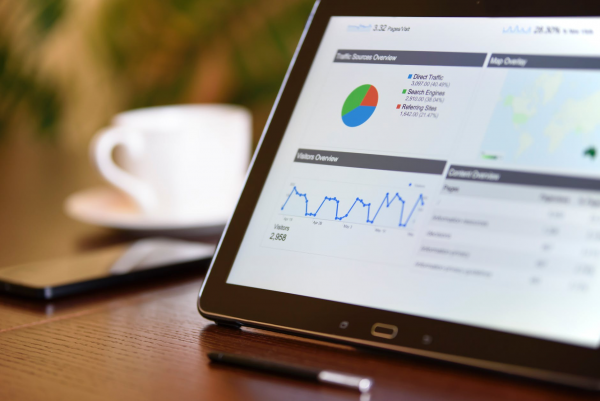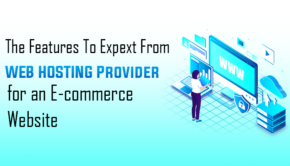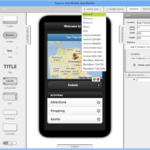Using Micro-influencers To Grow Your E-commerce
“Influencer” is a term that slid into the Collins Dictionary’s most recent shortlist of words of the year. This word, however, has long been on everyone’s lips, especially those who are always online.
To most people, an influencer is a famous person who posts a lot of lipstick swatches, slimming tea products, and workout regimens. To some, these personalities are their go-to reference for cool lifestyle choices. To others, they’re an inspiration for a nice Instagram feed. To marketers and business owners, though, an influencer can bring in leads and sales to grow your e-commerce business.
That said, it’s also best if influencers have ample expertise in best SEO practices for e-commerce.
In this post, we’ll be exploring who a micro-influencer is, how they can help your business, and how you can tap into their marketing power.
Here’s a simple guide to working with micro-influencers to grow your e-commerce business:
- What’s a Micro-influencer?
- Why Should You Work with a Micro-influencer?
- How Do You Leverage on a Micro-influencer’s Impact?
What’s a micro-influencer?
In marketing, an influencer is someone with the ability to persuade people to buy products or services by promoting them on social media.
There are three categories of influencers: mega, macro, and micro. The first two have millions of followers, since they’re either celebrities seen on television shows and films or personalities who rose to fame on the Internet Meanwhile, micro-influencers typically have 1,000 to 100,000 followers.

Photo courtesy of Daria Shevtsova via Pexels
Although micro-influencers don’t have the extensive reach of their mega and macro counterparts, their influence can be just as strong. Their thoughts and opinions about products and services or lifestyle choices matter and tend to resonate with their followers. What’s more, you can find micro-influencers in any niche, e.g. food, fashion, travel, fitness, crochet and calligraphy, to name a few. This makes them a prized addition to your e-commerce marketing campaign.
Why should you work with a micro-influencer?
There are many reasons you should tap micro-influencers to grow your own online influence. Below is a rundown of the benefits your business can experience:
1. Micro-influencers connect better with their followers.

Photo courtesy of Kaboompics.com via Pexels
Much like their audience, most macro influencers started out as no-name Internet users who began posting interesting content that caught other people’s attention. This relatability makes them trustworthy and genuine in the eyes of their followers. In marketing, this is gold because consumers are more likely to buy, in this context.
2. Micro-influencers often have high engagement on their posts.

A lean number of followers is key to this. It signifies a niche audience, i.e. people follow because they’re highly interested about the content creator’s posts. In other words, you’re tapping into an eager type of audience when you work with micro-influencers.
Additionally, the manageable number allows these content creators to interact with followers on a personal level. They can easily like or comment back, which keeps the conversation/ engagement going. This can either encourage buying on your e-commerce platform or make a follower recall your brand better or both. Either way, it’s a win-win situation for your business.
3. Micro-influencers are more cost-effective.

Photo courtesy of Artem Beliaikin via Pexels
The huge following of mega- and macro-influencers comes with a heavy price. To reach their millions of followers, you have to spend big. Micro-influencers, on the other hand, charge less for a post. In fact, there are some who would agree to post your brand in exchange for a free sample of your products or services. Or, in the case of high-ticket items, you can simply lend it to them for them to try for a fixed period of time. This as a common practice among tech reviewers, since many gadgets today cost a fortune. So why pay more when you can pay less and still get the brand exposure and high-quality leads with micro-influencers?
How do you harness a micro-influencer’s impact?
Considering how micro-influencers can convert their followers into paying customers in your online store, how do you start working with them? How can you make the most out of what they can offer? Below are some best practices you can try, to find the right influencer for your brand:
Finding the Right Influencers
1. Know what you’re searching for.

Photo courtesy of Pixabay via Pexels
Relevance is the first important characteristic you should look for. Since micro-influencers belong to specific niches, your brand must be relevant to their niche, and vice-versa Hence, if your online store sells skin care products, then look for micro-influencers in a beauty niche. If you’re offering tour packages, then go after travel-related content creators.
Next, look into the rate of engagement when identifying influencers. You need someone whose social media profile teems with likes and comments. Obviously, you want their followers to show interest in your branded post later on.
2. Go after micro-influencers who are already fans of your brand.

Photo courtesy of anna.m-w via Pexels
The best people to work with are the ones who already use your products and/or services. This way, you will no longer have to convince them of the worthiness of your e-commerce brand. In fact, they may have already been joining your hashtag parties or raving about your skincare items in their posts.
So how do you find micro-influencer fans? One is through branded hashtags. Check out the people who use your brand name as a hashtag, then check their follower count, quality of posts, average engagement, and overall profile. Another strategy is to revisit the list of people following you. An influencer who loves you is most likely following you; so look for them on your list of followers.
3. Type the right keywords.

Photo courtesy of Lisa Fotios via Pexels
If influencers are not using your branded hashtags, there’s a better chance that they’re using keywords related to their specific niches, which are relevant to your brand. So it’s just a matter of determining what they’ll most likely use. You don’t have to think too hard; the buzzwords in your online store will be the very terms they’ll post about, as well.
Based on the example above, if your business sells skincare products, some sample hashtags you should be searching for would be:
- #beauty
- #skincareroutine
- #skincaretips
- #skincarejunkie
- #antiaging
- #glowingskin
- #glassskin
4. Use technology.

Photo courtesy of PhotoMIX Ltd. via Pexels
If you don’t have the time to look for influencers manually, get some search tools, like Buzzsumo or Heepsy. These platforms allow you to filter results based on location and follower count. Once you get an idea of who you want to work with, you can search for them on the Web to get to know them.
Reaching Out to Influencers
After finding the right micro-influencer, it’s time to reach out to them. Here’s how you can go about the process:
1. Talk to them online.

Photo courtesy of Roman Pohorecki via Pexels
It’s best to start with casual interactions. For instance, like their posts, leave comments on their page, or share their content. This is a good way to build rapport with them before introducing yourself and submitting a formal partnership proposal.
2. Be ready to name your price.

Photo courtesy of Pixabay via Pexels
Although some micro-influencers will be more than happy to work with you, in exchange for free products and services, not everyone will want to do this. Hence, be ready to name and negotiate your price that will be reasonable for both you and your influencer.
3. Be straightforward in your e-mail.

Photo courtesy of Burst via Pexels
When it’s time for you to submit a formal pitch via e-mail, be courteous but straightforward. Like you, micro-influencers are their own business owners; their time is gold. So keep your e-mail tight and on point. Prepare an outline, if you must.
Find inspiration from thousands of e-mail proposals online, if you need a bit of help.
Increasing Engagement on an Influencer’s Posts
Although micro-influencers have the ability and the track record to drive up engagement, you can supplement that with content strategies to further improve your campaign. Below are some ideas you can try:
1. Encourage them to write an honest review.

Photo courtesy of freestocks.org via Pexels
Followers place a high level of trust on micro-influencers because they’re genuine. Capitalize on this reputation by letting the content creator write honest reviews about your products and services–even if you provided these as samples. If you believe in your brand, this shouldn’t be a problem.
Be transparent that it’s okay for them to state a negative opinion, in case there is. Make sure, though, that they have the full product information from which they should base their opinions on. They can try different content types. It can be a blog, a vlog, or a social media post. Ask your influencer if you can also post the content on your e-commerce site.
2. Organize a fun giveaway campaign.

Photo courtesy of Kaboompics.com via Pexels
Giveaways drive up engagement because people know they’ll get a chance to win a prize. Have your influencer host the promo. As their official partner, explain the mechanics and the prize to them. Sell the idea by showing how this campaign will further increase their followers and content engagement. They need to see how a giveaway promo would be worth their time and effort.
The mechanics could be as simple as liking your brand’s official page or leaving e-mail addresses on the influencer’s branded post (you can use this for your e-mail marketing campaign later). As for the prize, make sure it would highly appeal to your influencer’s audience. Market the giveaway promo in your own e-commerce platform.
3. Write a tutorial.

Photo courtesy of Kaboompics.com via Pexels
How-to content is equally appealing to people, since they can learn something new from it. When a micro-influencer creates the tutorial, the content becomes all the more interesting. Look for a content creator who already does this type of post on their site.
How-to content topics can vary. If the product or service you want to promote is fairly new in the market, then a short video clip about how to use it may be the better option. If it’s already popular, though–say, a skincare product, you can come up with creative tutorials such as how to apply toners, serums, and other items in the correct order.
Key Takeaways
Influencers are a crucial ingredient in growing your e-commerce business. Knowing what kind of influencer will suit your brand will yield the best possible results. A micro-influencer, someone with a good enough number of loyal followers, is worth considering for the following reasons:
- These content creators are genuine, credible, and engaging. This increases the likelihood of their followers actually trying the products and services at your online store. You can reap this benefit for a considerably affordable price.
- The journey to working with the right influencer starts with your search. It’s best to find people who already adore your brand. If you’re new to the industry, use relevant keywords to discover potential influencers.
- Be strategic in reaching out to micro-influencers. You want the influencer to say, “Yes,” so do your best to build a sincere relationship with them, and give them an offer they will find hard to resist.
- High engagement is the goal. While micro-influencers can deliver this because of their credibility and strong connection with their followers, it still pays to know which content types will best compliment your strategy and increase your overall online engagement.











![10 Facts That Everyone Gets Wrong About Vaping [Infographic]](https://technofaq.org/wp-content/uploads/2016/12/10_Facts_That_Everyone_Gets_Wrong_About_Vaping_HD-150x150.png)




